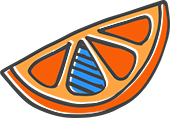In order to install WordPress on your shared hosting account, you’ll need to have your domain name connected to your account + a new database created. After that, you’re a few minutes away from a brand new WordPress website!
This post is the third part of a series in setting up your own WordPress website, DIY style. If you missed the second post, check it out here.
Download the files
WordPress is free to use, so grab the files you’ll need from their website. Once you’ve downloaded them to your computer, double click on the .zip file to open it up. We need to add the database info you created so that your site knows where to store content.
Step 1
In the folder you just downloaded, look for wp-config-sample.php. Before you open it, double click on the file name + change it’s name to wp-config.php. This let’s your site know the file has been set up.
Step 2
Open wp-config.php in a text editor tool (like TextEdit on a mac) so you can add in your database details. The tool you use to type doesn’t matter much — you’ll copy + paste a few items, then move on.
Replace the following lines in your wp-config.php file with the details from the database + database user that you created through your hosting account.
- database_name_here will be replaced by your new database name
- username_here will be replaced by your database username
- password_here will be replaced by the password you set
Step 3
This step is totally optional, but highly recommended for security. Plus, it only requires you to visit a link, then copy + paste. So these few seconds are well spent. We’re going to set up unique keys + salts as you install WordPress.
Nerd break: these elements help your site verify who’s logged in + who’s commenting on your site.
Visit this link to get your unique phrases (they are automatically generated each time the page loads). Copy the entire block of code that is shown. While still in your wp-config.php file, paste the code you just copied to replace lines 49-56. This block of lines starts with “define(…” + isn’t hard to miss.
define('AUTH_KEY', 'put your unique phrase here');
define('SECURE_AUTH_KEY', 'put your unique phrase here');
define('LOGGED_IN_KEY', 'put your unique phrase here');
define('NONCE_KEY', 'put your unique phrase here');
define('AUTH_SALT', 'put your unique phrase here');
define('SECURE_AUTH_SALT', 'put your unique phrase here');
define('LOGGED_IN_SALT', 'put your unique phrase here');
define('NONCE_SALT', 'put your unique phrase here');
That’s it! Your WordPress site files are ready to be installed + you can ditch whatever you saved your database details with.
Install WordPress
Now it’s time to connect to your hosting account via FTP or SFTP (the more secure option). Find the directory (or folder) that you created for your domain in step one. This folder is where you want to upload the contents of the wordpress folder you downloaded from wordpress.org.
Open the wordpress folder on your computer (the one you edited the wp-config.php file in) so that you can see the files contained within. Select all of the files + folders. Drag those items into the directory you want them added to in FileZilla to begin the upload process.
Because there are a lot of files, this can take a few moments. Once it’s complete, go to your domain (URL/web address) in your browser of choice to finish the installation.
WordPress settings
This final part of the process to install WordPress on your shared hosting account is one of the easiest because you’re guided through each step by WordPress.
After going to your domain, you’ll be asked what the primary language of the site is, the site name, tagline + your user info. Then click the “install WordPress” button to wrap it up. From there, you’ll be able to log in with the username + password that you just created.
Congratulations on installing your WordPress website!
There’s an additional step in this process that will help make your site faster + less enticing for hackers. We’ll go over those pieces next.
